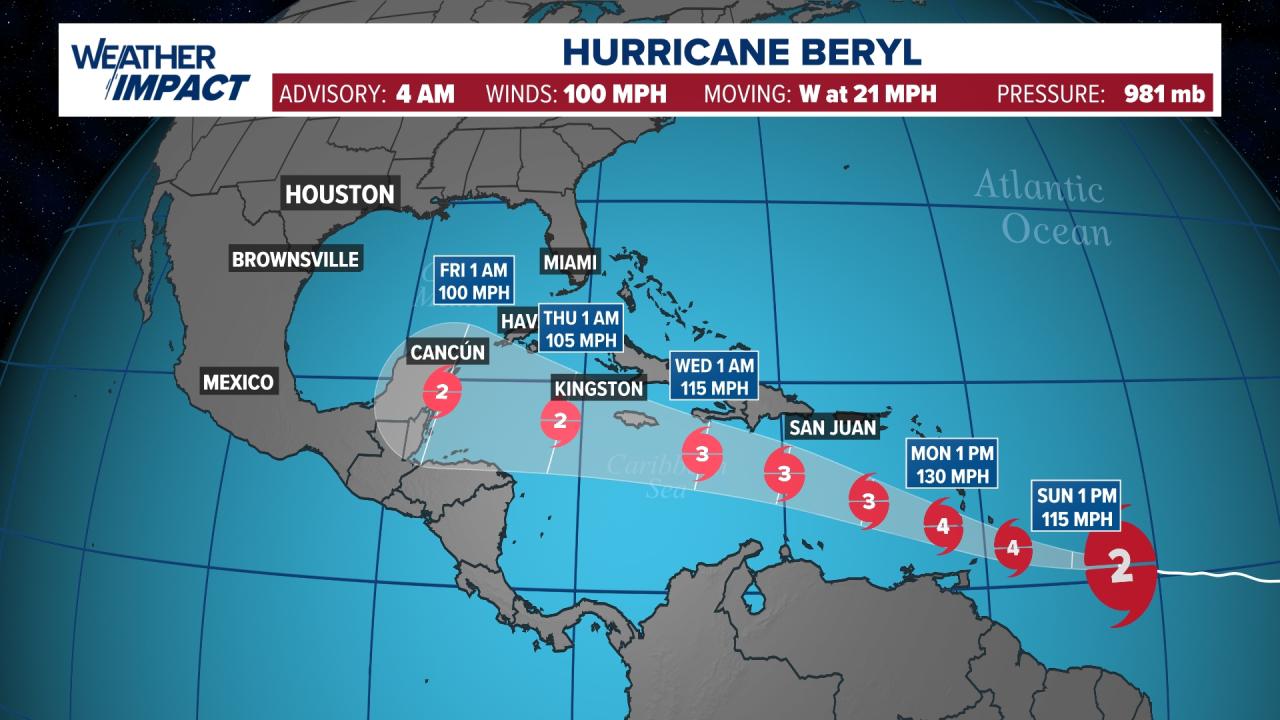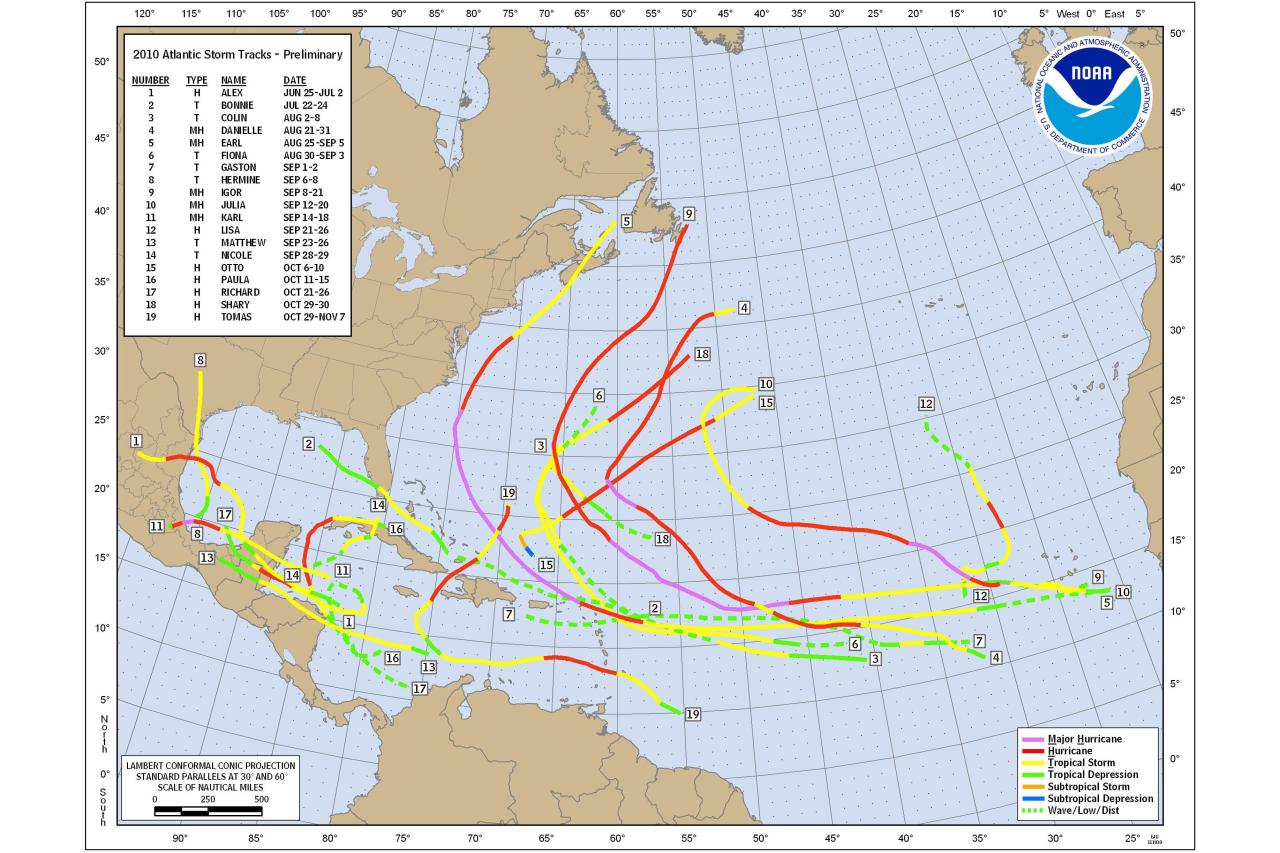Hurricane Tracker: Your Essential Guide to Real-Time Hurricane Tracking, Historical Data, and Safety Measures. Dive into the world of hurricane tracking, exploring the cutting-edge technologies and data sources used to monitor these powerful storms in real-time. Uncover the historical patterns and trends of hurricanes, and delve into the factors that contribute to their intensity and frequency.
Stay informed and prepared with comprehensive hurricane preparedness tips and essential supplies, ensuring your safety during these formidable weather events.
Real-Time Hurricane Tracking

Real-time hurricane tracking is a crucial aspect of hurricane forecasting and disaster preparedness. It involves using various advanced technologies and data sources to monitor the movement, intensity, and potential impacts of hurricanes as they develop and evolve.
One of the primary mechanisms used for real-time hurricane tracking is satellite imagery. Satellites provide a bird’s-eye view of the Earth’s atmosphere and oceans, allowing meteorologists to observe the formation and development of hurricanes. Satellite images can reveal the size, shape, and cloud patterns of hurricanes, which provide valuable information about their intensity and potential path.
Another important tool for real-time hurricane tracking is radar. Radar systems emit radio waves that bounce off objects in the atmosphere, including rain clouds and hurricane bands. By analyzing the reflected signals, meteorologists can determine the location, movement, and precipitation intensity of hurricanes.
Radar data is particularly useful for tracking hurricanes as they approach land, as it can provide detailed information about their structure and potential impacts on coastal areas.
In addition to satellites and radar, weather stations also play a vital role in real-time hurricane tracking. Weather stations collect data on wind speed, wind direction, temperature, humidity, and pressure. This data can be used to track the movement of hurricanes and monitor their intensity.
Weather stations are often located in coastal areas and on islands, providing valuable information about the potential impacts of hurricanes on land.
Historical Hurricane Data and Analysis

Hurricanes, powerful and destructive storms, have a long and impactful history. Analyzing historical data provides valuable insights into their patterns, trends, and contributing factors.
Most Destructive Hurricanes on Record
Throughout history, numerous hurricanes have left a trail of devastation. The following table lists some of the most destructive hurricanes on record, based on their impact and damage:
| Hurricane | Year | Category | Damage (USD) |
|---|---|---|---|
| Katrina | 2005 | 5 | $170 billion |
| Maria | 2017 | 5 | $90 billion |
| Harvey | 2017 | 4 | $140 billion |
| Andrew | 1992 | 5 | $65 billion |
| Irma | 2017 | 5 | $65 billion |
Factors Contributing to Hurricane Intensity and Frequency
Several factors contribute to the intensity and frequency of hurricanes, including:
- Ocean Temperature:Hurricanes form and intensify over warm ocean waters. Higher ocean temperatures provide more energy for the storm.
- Wind Shear:Vertical wind shear can disrupt hurricane formation and weaken existing storms.
- Atmospheric Pressure:Hurricanes form when there is a large difference in atmospheric pressure between two areas.
- Climate Change:Rising sea temperatures and changes in atmospheric circulation patterns due to climate change may lead to more frequent and intense hurricanes.
Hurricane Preparedness and Safety Measures
Hurricanes are a significant threat to coastal communities, causing widespread destruction and loss of life. Proper preparation is crucial to ensure the safety of individuals and communities during these storms.
Essential Supplies
Before a hurricane strikes, it is essential to gather a supply kit containing essential items for survival. This kit should include:
- Water: 1 gallon per person per day for at least three days
- Non-perishable food: Canned goods, energy bars, crackers
- First-aid kit: Antiseptic, bandages, pain relievers
- Whistle
- Important documents: Passports, insurance cards, cash
- Medications
- Hygiene items: Toilet paper, hand sanitizer
- Pet supplies (if applicable)
li>Flashlight and extra batteries
Evacuation Plans, Hurricane tracker
In the event of a hurricane warning, it is important to have an evacuation plan in place. This plan should include:
- Identifying evacuation routes and destinations
- Designating a meeting place for family members
- Preparing an evacuation bag with essential supplies
- Arranging transportation or alternative means of evacuation
Staying Informed
Staying informed during a hurricane is crucial for safety. It is important to:
- Monitor weather forecasts and hurricane advisories
- Follow official instructions from local authorities
- Use reliable sources of information, such as the National Hurricane Center
- Avoid spreading misinformation or rumors
Wrap-Up: Hurricane Tracker
![]()
Hurricane Tracker: Your indispensable tool for staying informed and prepared during hurricane season. With real-time tracking, historical data, and safety measures at your fingertips, you’ll navigate hurricane season with confidence and peace of mind. Embrace the power of knowledge and preparedness, and let Hurricane Tracker be your guide through the storms.
Questions Often Asked
What is a hurricane tracker?
A hurricane tracker is a tool that provides real-time information on the location, intensity, and movement of hurricanes. It uses data from satellites, radar, and weather stations to track hurricanes and provide updates on their progress.
How can I use a hurricane tracker?
You can use a hurricane tracker to stay informed about the latest hurricane activity. This information can help you make decisions about whether to evacuate or take other precautions.
What are the benefits of using a hurricane tracker?
Using a hurricane tracker can help you stay safe during hurricane season. It can provide you with the information you need to make informed decisions about your safety.
